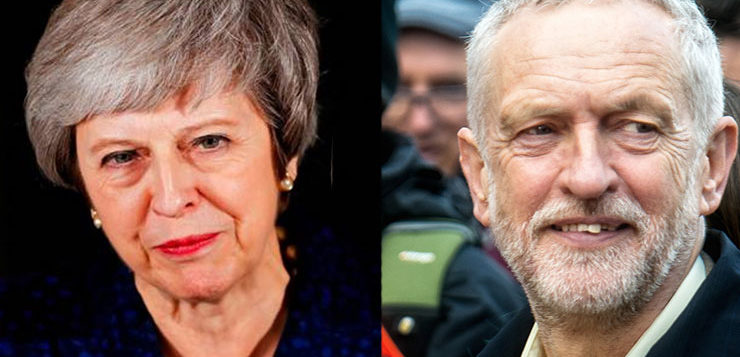The United Kingdom – and Europe – are entering uncharted waters with the impending ‘Brexit’. Ilan Salbe suggests everyone take a breath, and have a rethink.
There needs to be a people’s vote on Brexit, one deciding between (1) remaining, (2) a ‘no deal’ exit, and (3) the proposal that will emerge from the negotiations on the framework for a future relationship.
Keeping the three options alive respects the will of the people expressed in the 2016 referendum, acknowledges the irrational mess of where Brexit presently sits and still provides the opportunity for government to bed down a future relationship proposal.
A fly in the ointment is how to delay any irreversible decision on Brexit for the two years it will take for the future relationship negotiations to come to fruition. A solution possibly lies in either exploiting the recent European Court of Justice’s Article 50 ruling or with EU co-operation on a redraft of Article 50.
A short rehash of the Brexit process is a prerequisite to expanding on the flaws in the logic of its architecture and how they can be repaired.
Withdrawing from the EU is a muddled bureaucratic process. It’s a reflection of the nature of the institutions involved and that there’s been no prior experience to learn from. When Theresa May notified the EU on 29 March 2017 that the UK wanted to exit under the terms of ‘Article 50 of the Treaty on European Union’ it was a first for the EU.
Article 50 requires the drawing up of a withdrawal agreement that, critically in this context, needs to give regard to a future relationship framework. It also requires withdrawal to happen two years after notification of an intent to exit or earlier if an agreement is signed-off.
The wheels of the UK government and the EU have turned and two documents produced to satisfy the requirements of Article 50.
The first, ticked-off on the 14 November 2018 by UK and EU negotiators, was a weighty 585-page draft withdrawal agreement that will come into force if approved by the UK parliament.
The second, agreed on the 22 November 2018, was the companion political declaration on the formulation of a future relationship. In a less weighty 26 pages, it spells out broadly agreed aims in the areas of a hard border on the island of Ireland, trade in goods and services – including tariffs and a single customs territory, workings of financial markets, mobility of people and a fair bit more.
The release of the withdrawal agreement and political declaration had bared the Brexit devil in the detail. Precious little time, just 127 days before the Article 50 two-year deadline would be reached, was given for the parliamentarians to absorb it all and decide what to do about it.
Being fair, the draft withdrawal agreement envisages a staged UK exit, designed to give government more time to work on the future relationship aspect. The agreement achieves this through a four-step program.
Firstly, a withdrawal sign-off occurs no later than the 29 March 2019. Secondly, a transition period is entered, lasting up to 31 December 2020, or longer if agreed to before that date, where in effect it’s still business as usual.
Thirdly, a post transition period is entered, where, if a new relationship hasn’t been agreed to, a backstop arrangement comes into place where the whole of the UK is in an EU customs territory, but it no longer has the rights convened to EU member states. Fourthly, the post transition arrangement remains in place until such time as something else is agreed upon.
The staging lacks one indispensable element. Once sign-off occurs, there is no ability, in the face of dissatisfaction with any of steps two through to four, to reverse course and remain in the EU. Exit is mandatory with withdrawal agreement sign-off – there is no escape.
The nub of the problem is that the Brexit cart has always been placed in front of its horse. An irreversible decision to leave the EU can only be rationally made in full knowledge of the alternatives.
The political declaration states it will take around two years to thrash out an alternative relationship proposal. So, only in about two-years’ time will the parliament, or far better still the ‘people’, be able to rationally decide between a proposed relationship, remaining and a no-deal exit.
Unfortunately, the lack of prior experience with Article 50 has ensured its wording doesn’t allow for the thrashing out of a future relationship before withdrawal takes place. One possible work-around would be to take advantage of the recent European Court of Justice’s ruling that the UK parliament can revoke its Article 50 exit application as long as it happens before withdrawal sign-off.
The UK parliament could make that revocation on one day and issue a new Article 50 application the next. That would restart the clock and provide the necessary two years to put together the proposal for a new relationship.
More in the spirit of co-operation, a request could be made to the EU to redraft Article 50, so it allows for a future relationship proposal to be negotiated before withdrawal sign-off.
Logically, negotiation related expenses would be met by the EU member nation seeking exit.
It’s time for the politicians to put aside their ideology driven bickering and instead do something far worthier. They should come together and work with the EU to facilitate a referendum that gives the people a choice between remaining, a no-deal exit, and a thoroughly worked out proposal for a new relationship.
Donate To New Matilda
New Matilda is a small, independent media outlet. We survive through reader contributions, and never losing a lawsuit. If you got something from this article, giving something back helps us to continue speaking truth to power. Every little bit counts.




